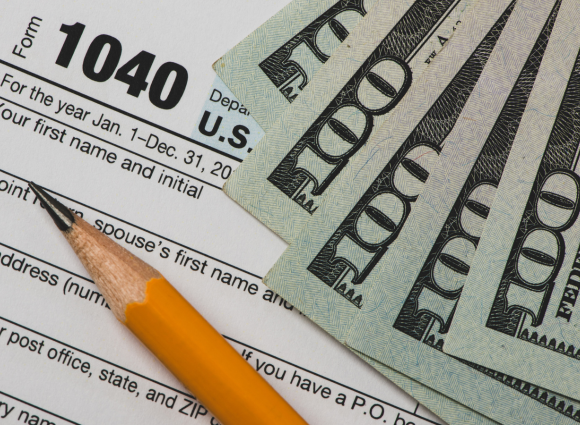
5 Mid-Year Tax Planning Ideas for Small Business Owners
The second half of 2020 has begun. What steps can small business owners take today to lower taxes for the current tax year? Alternatively, would it make more sense to maximize taxable income this year if you expect higher income and/or unfavorable changes to the tax law starting in 2021?
Uncertain Times
These are tough questions given today’s volatile environment. Many businesses have suffered losses due to the COVID-19 crisis. Some have been forced to lay off or furlough employees — or otherwise cut salaries, benefits, travel and other operating expenses. New health and safety protocols have altered business models and caused businesses to spend money to comply with federal and state reopening guidelines.
These effects have trickled down supply chains and affected distribution methods for some businesses. As a result, many businesses — such as full-service restaurants, insurers, salons, farms, summer camps and resorts — are projecting significant losses for 2020.
Fortunately, the Coronavirus Aid, Relief and Economic Security (CARES) Act has provided various relief measures for small businesses. These include federal grants, loans and retroactive tax breaks.
To further complicate matters, it’s a presidential election year, and the race is highly contentious. Depending on the outcome of the November elections, today’s tax laws and government regulations may change for 2021 and beyond.
With all that in mind, here are five mid-year tax planning suggestions for small business owners to consider for 2020.
1. Pay Taxes Due
The normal deadlines for corporations, owners of pass-through businesses and self-employed individuals to pay estimated taxes for the first two quarters of 2020 are April 15 and June 15, respectively. This year, the IRS extended both deadlines until July 15. If you haven’t already paid what you or your business will owe for the first and second quarter, it’s time to settle up with Uncle Sam. If your business has been adversely affected by the pandemic, you may not have much taxable income to report — so, estimated taxes may be minimal.
The IRS hasn’t extended the due dates for paying estimated taxes for the third quarter. Unless that changes, calendar-year taxpayers must pay those amounts by September 15 to avoid penalty and interest charges. Evaluate whether you or your business will have enough cash on hand to meet the third quarter deadline after paying first and second quarter estimates in July. Owners of pass-through entities might need to take a distribution from their businesses to cover their estimated payments for the third quarter.
2. Keep or Rehire Workers
Under the CARES Act, your business can claim a payroll tax credit equal to 50% of the qualified wages paid to employees after March 12, 2020, and before January 1, 2021. To qualify for the credit, you meet either of these two requirements:
- The business fully or partially suspended operations during any calendar quarter due to the COVID-19 pandemic.
- The business experienced a significant decline in gross receipts. A “significant decline” occurs if gross receipts are less than 50% of the gross receipts for the same calendar quarter in 2019.
For the purposes of claiming the payroll tax credit, “qualified wages” are limited to the first $10,000 of wages paid to an employee. Thus, the maximum credit is $5,000 per employee,
3. Delay Paying Payroll Taxes
If your business is struggling, it can postpone paying part of its payroll tax obligations for two years. Generally, the next quarterly due date for payroll taxes for corporations is November 2. (October 31 is a Saturday.) But under the CARES Act, your business can defer the 6.2% Social Security tax component of payroll taxes for the period between March 27, 2020, and December 31, 2020.
Under this provision, a business may pay 50% of the required Social Security tax by the end of 2021, and the remaining 50% by the end of 2022. Similarly, self-employed individuals can defer 50% of part of their self-employment tax by paying 25% of the amount due by the end of 2021, and the remaining 25% by the end of 2022.
4. Take Advantage of Bonus Depreciation on QIP
Many small businesses have and will reconfigure offices, plants and warehouses to comply with COVID-19 social distancing and safety guidelines. These investments can be costly. Fortunately, the CARES Act includes a retroactive correction to the statutory language of the Tax Cuts and Jobs Act (TCJA). The correction allows much faster depreciation for real estate qualified improvement property (QIP) that’s placed in service after the TCJA became law.
Specifically, the correction allows 100% first-year bonus depreciation for QIP that’s placed in service in 2018 through 2022. That’s because QIP placed in service after 2017 is now eligible for a 15-year cost recovery period instead of a 39-year cost recovery period.
QIP is generally defined as an improvement to an interior portion of a nonresidential building that’s placed in service after the date the building was first placed in service. However, QIP does not include any expenditures attributable to:
- The enlargement of the building,
- Any elevator or escalator, or
- The building’s internal structural framework.
If your business will be unprofitable this year due to the COVID-19 crisis, deductions for 100% first-year bonus depreciation can create or increase a net operating loss (NOL) for 2020.
Some businesses that used a 39-year recovery period for QIP may instead opt to depreciate QIP over 15 years rather than claiming 100% first-year bonus depreciation. This could be a smart move if, for example, you expect tax rates to be higher in the future or if your business operates as a pass-through entity (such as a partnership, limited liability company or S corporation) and taking 100% bonus depreciation will cause you to miss out or reduce the deduction for qualified business income (QBI). Your tax advisor can advise you about the pros and cons of claiming bonus depreciation vs. depreciating QIP over 15 years.
6. File an Amended Federal Income Tax Return
Unless you filed for an extension, you’ve probably completed the appropriate federal tax filings for the 2019 tax year. The CARES Act now includes several provisions that can provide retroactive tax benefits for small business owners. These provisions could make it worthwhile to file an amended return for 2018 or 2019.
For example, previously, a business could carry back a NOL for two years and forward for up to 20 years. Beginning in 2018, the two-year carryback rule was eliminated, but losses could be carried forward indefinitely. In addition, NOLs are generally limited to 80% of business income under this tax law change.
The CARES Act provides a five-year carryback for NOLs incurred in 2018, 2019 or 2020. It also suspends the 80%-of-business-income limit on NOLs until 2021.
In addition, you might decide to file an amended return to take advantage of the QIP technical correction for improvements made in 2018 and 2019. Regardless of whether you choose bonus depreciation or the 15-year straightline depreciation method, your options under the CARES Act are better than they were before the correction. And bonus depreciation deductions can also be used to create or increase an NOL for 2020.
Brave New World in Tax Planning
Tax planning is especially complicated this year. This article covers just the tip of the iceberg for small businesses. Contact us to discuss mid-year planning strategies to determine the right course of action based on your current situation.



